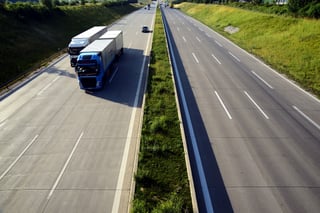With summer comes road “blow-ups,” where the heat causes pavement to suddenly buckle. As with the potholes of winter, highway departments typically don’t know where blow-ups occur until motorists report them. Relying on customer complaints to identify problems is, well, problematic. That’s why savvy governments and businesses are increasingly looking to the Internet of Things (IoT) to ferret out problems before customers notice.
 IoT can be a source of data that these organizations otherwise wouldn’t have. But the key is not only identifying these new sources, but also implementing the right analytic tools to turn all that data into actionable insights.
IoT can be a source of data that these organizations otherwise wouldn’t have. But the key is not only identifying these new sources, but also implementing the right analytic tools to turn all that data into actionable insights.
Case in point: The U.S. Postal Service estimates that it could save $70 million annually by putting IoT devices in its vehicles to collect data such as engine conditions. That way, it can catch problems before they lead to expensive breakdowns.
The USPS operates the world’s largest civilian fleet, which travels about 1.5 billion miles annually. That means those vehicles are ideal for collecting information about road conditions—not just where potholes and blow-ups are, but also the roads where mail trucks frequently brake suddenly and hard, indicating traffic problems.
The USPS wants to share some of its IoT data with smart cities, which could use it to stretch their transportation budgets. One example is pinpointing roads that need additional lanes or traffic signals, or identifying where rough conditions indicate that potholes are appearing. There are also potential side benefits. For instance, fewer traffic jams mean less pollution and healthier citizens—two major goals for most smart city initiatives.
Analyzing IoT data from disparate sources could uncover additional insights. Suppose a municipality has access to vehicular IoT data, public health data such as asthma cases and data from carbon monoxide/dioxide sensors around the city. With the right analytic tools, that city now can understand exactly how pollution levels affect certain neighborhoods—and even the societal costs, such as disability claims and low test scores because children miss school due to respiratory problems. That city also could pull in unstructured data, such as citizens’ social media posts about traffic, pollution, poverty and health.
As the number of internal and external data sources grows, so does the old challenge of mining it to find those nuggets of insights. That’s why smart cities, business and other organizations are increasingly turning to semantic technologies, which eliminate traditional, time- and resource-intensive processes such as querying multiple databases in the quest for answers.
To learn more about how semantic technology can give you access to insights from all your disparate IoT data, download our Anzo whitepaper.

